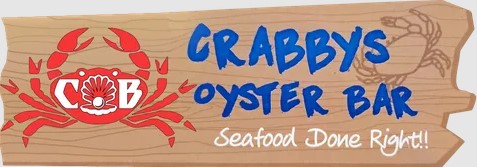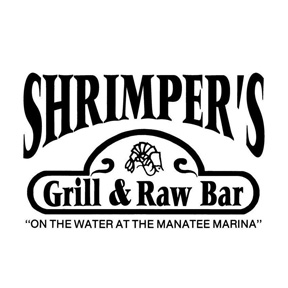Oysters are a keystone species within the IRL ecosystem and provide several critical ecosystem services such as filtering nutrients and particles from the water column and food for shorebirds and marine animals. Oyster reefs are habitat for numerous fish and marine invertebrates and break up wave energy that would otherwise contribute to shoreline erosion. Unfortunately, oyster health is in a decline worldwide and it is estimated that oyster populations have been reduced by 85% globally.
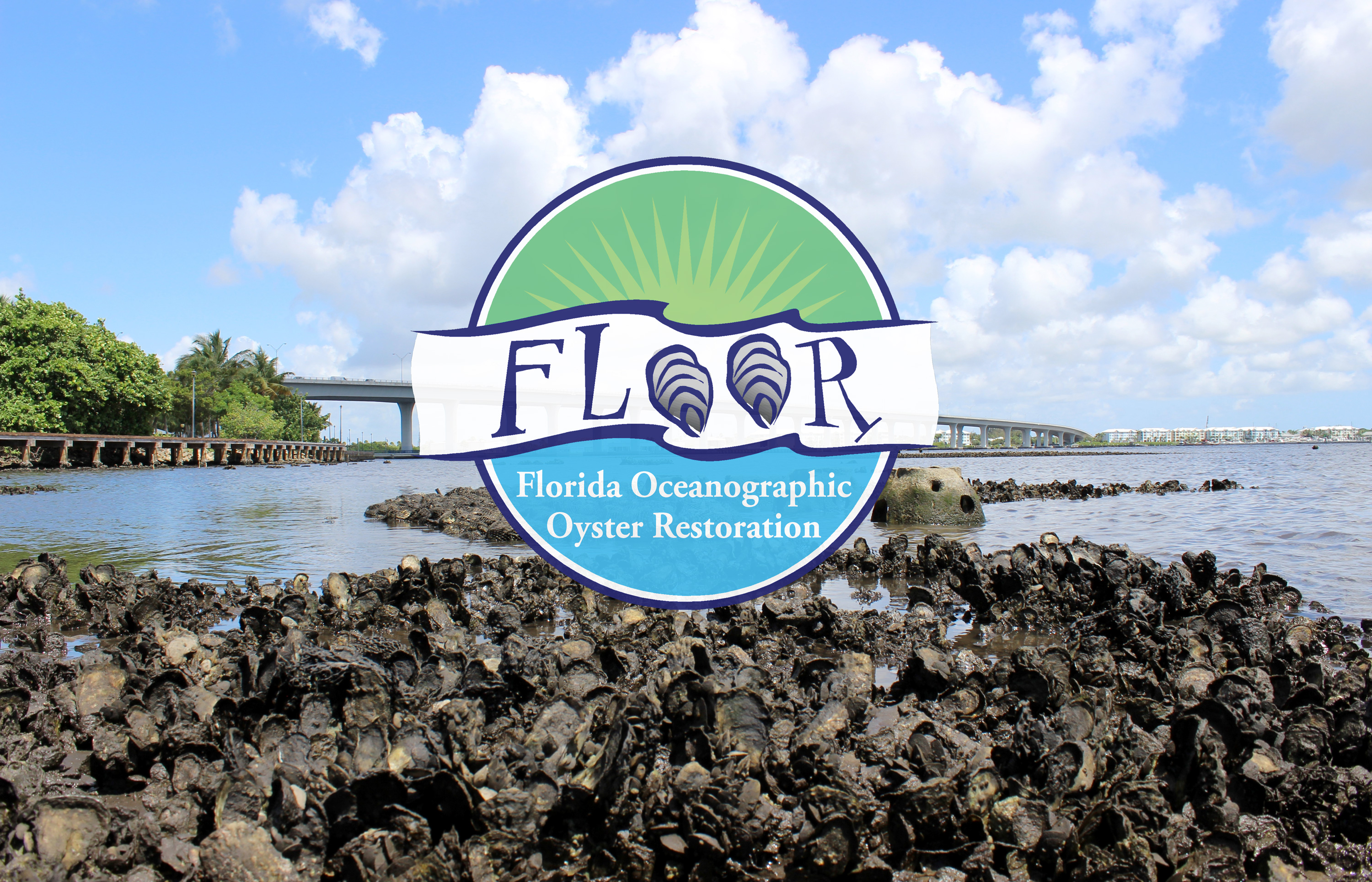
The FL.O.O.R. (Florida Oceanographic Oyster Restoration) program helps restore oyster reef habitat in the St. Lucie Estuary and Indian River Lagoon using oyster shells collected from local restaurants as part of the Florida Oceanographic Society shell recycling program. With the aid of volunteers, FLOOR restores oyster habitat by constructing reefs and conducting other research projects with the shell. Used, shucked shells are the foundation of oyster reef construction. Shells, particularly oyster shells, are the most ideal substrate upon which new baby oysters (“spat”) glue themselves. This is how natural oyster reefs form in our estuaries; spat glue themselves to existing shell, on both live and dead oysters, and as the spat grows, the reef grows. By placing recycled shell on the estuary floor, we are jump-starting the process of creating a new oyster reef, while at the same time saving this precious resource from the landfill. Available shell is often the most limiting factor in restoring oyster reefs, and so recycling used shell ensures a consistent source of substrate for oyster restoration.
To date, Florida Oceanographic Society has restored nearly 60,000 square feet of oyster reefs in the St. Lucie Estuary and Indian River Lagoon, which was made possible by the help of over 2,400 volunteers dedicating 6,000+ hours and the participation of 20 local restaurants.
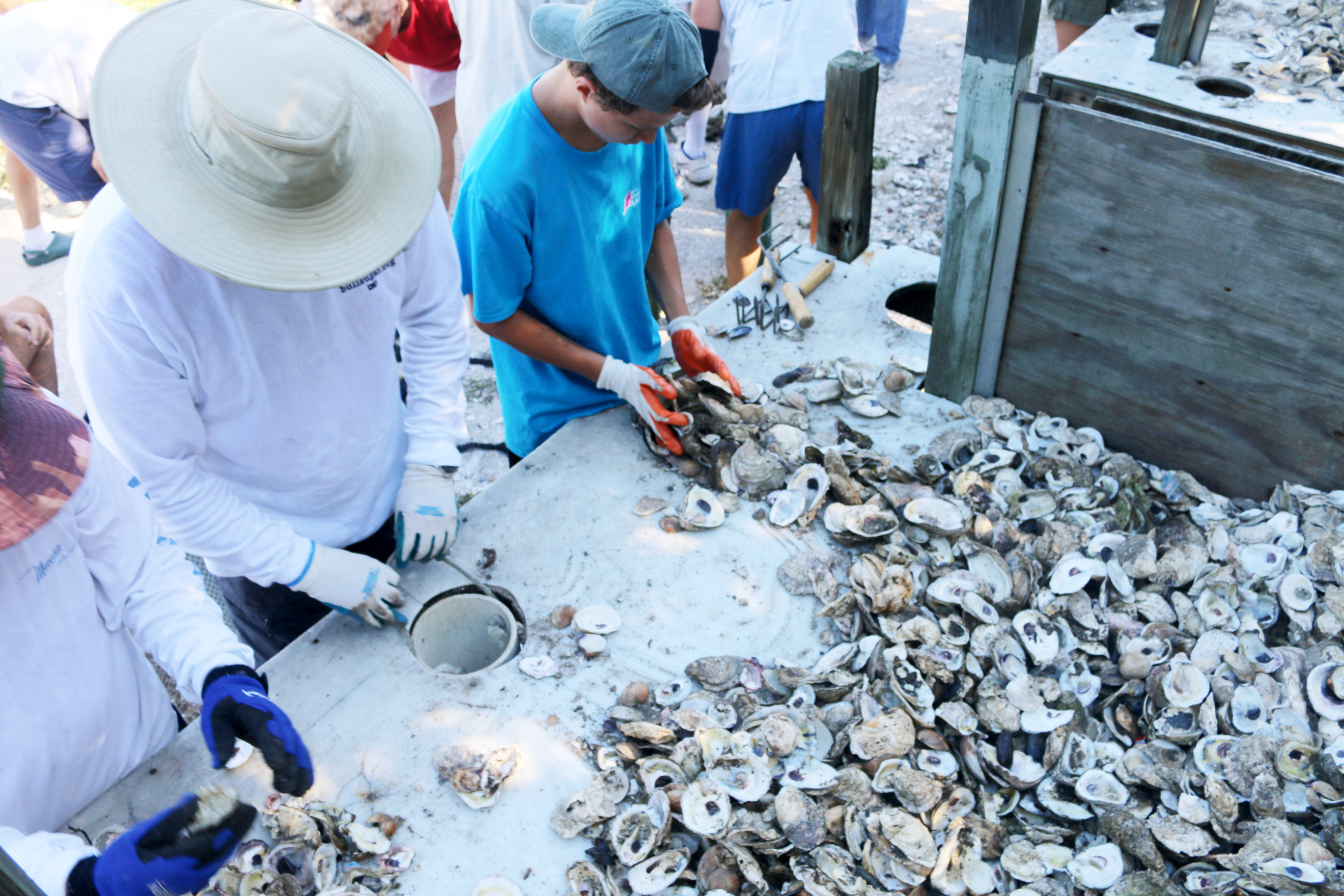
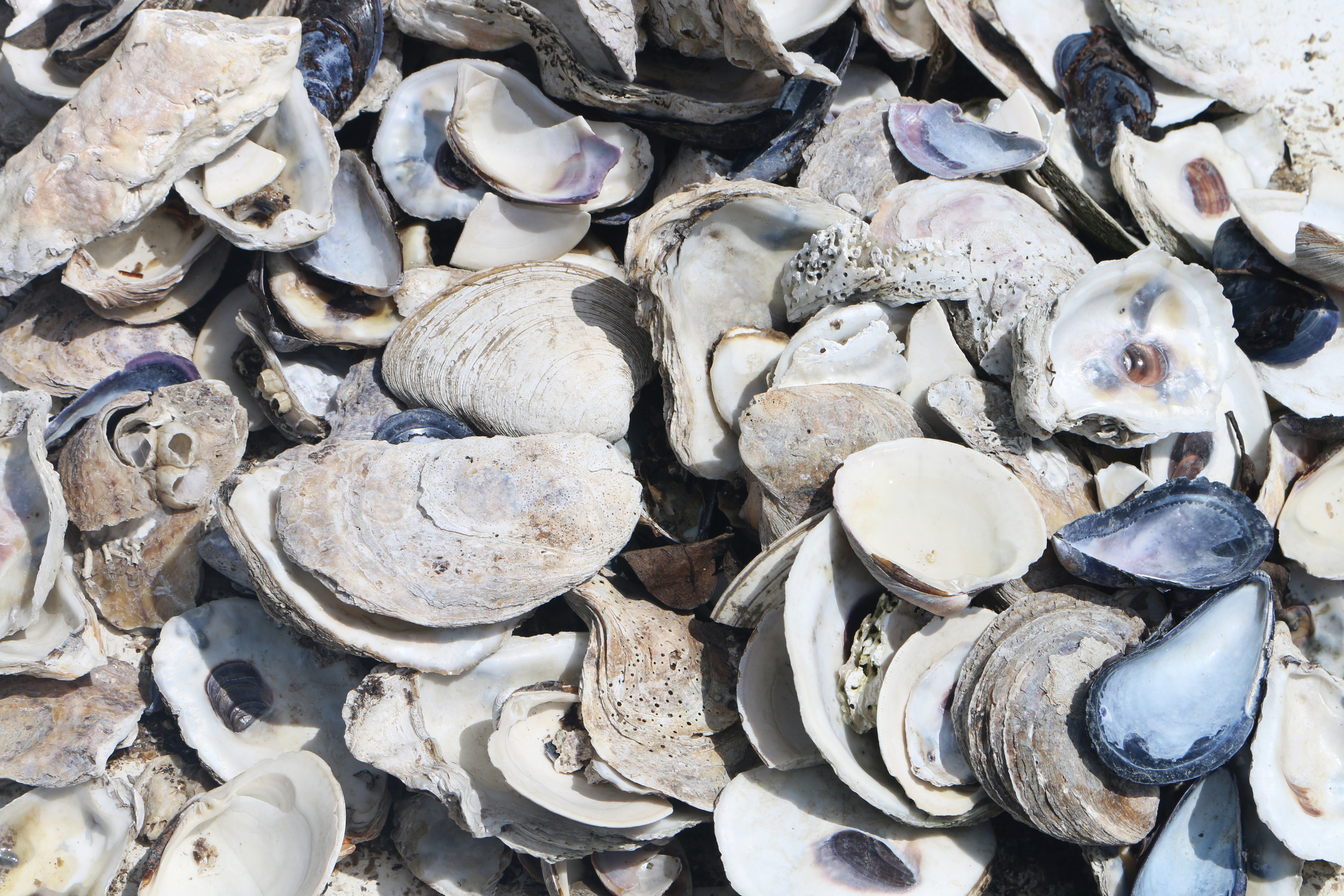
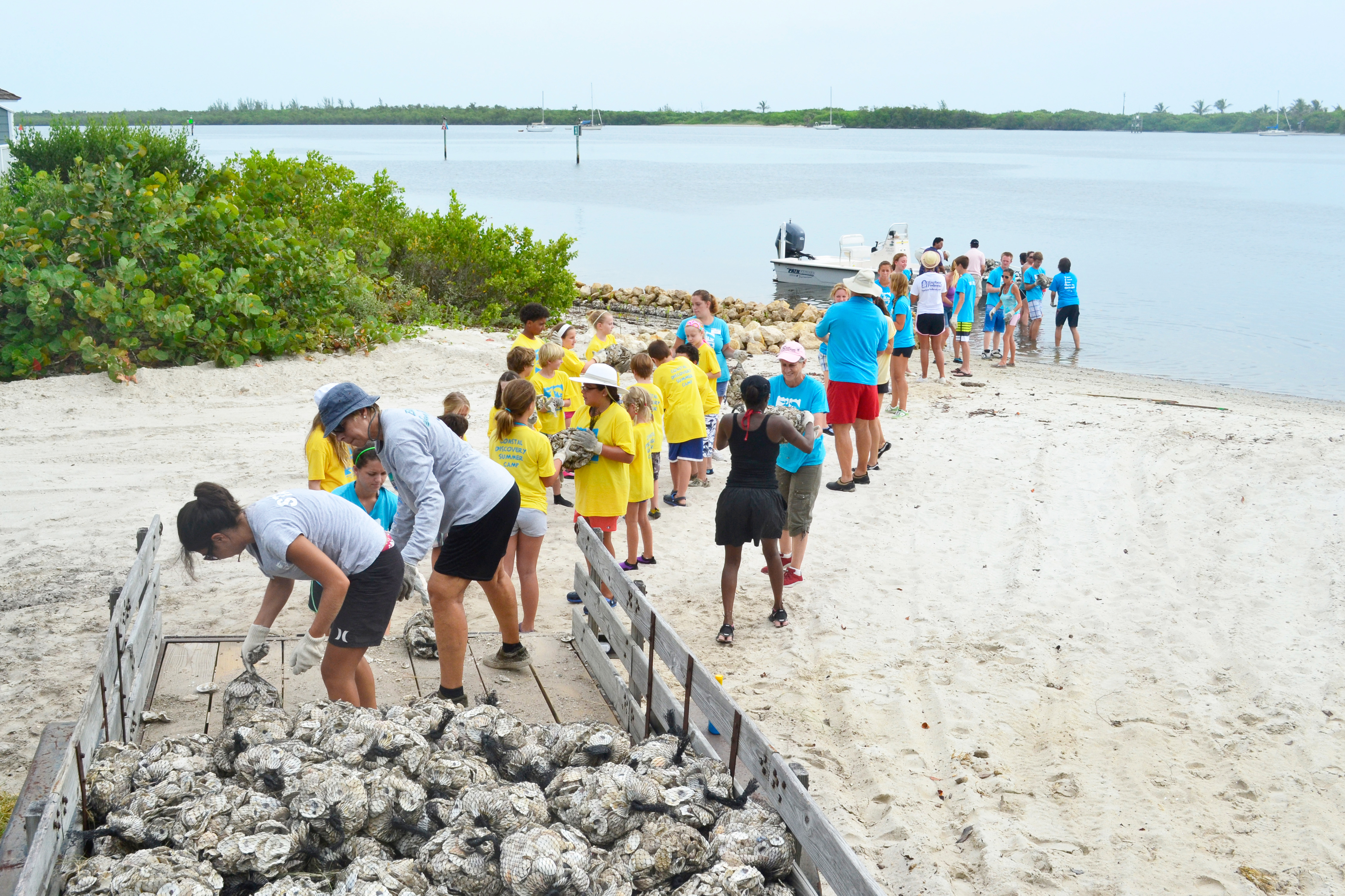
View the 2022 Annual FLOOR Report
View the 2021 Annual FLOOR Report
*Please note that our FLOOR Program is currently not collecting recycled shells from partner restaurants.
